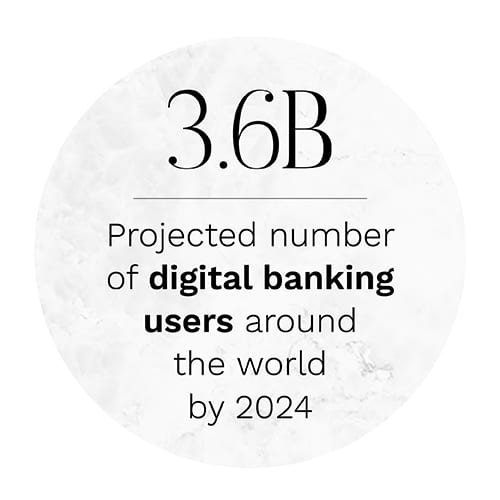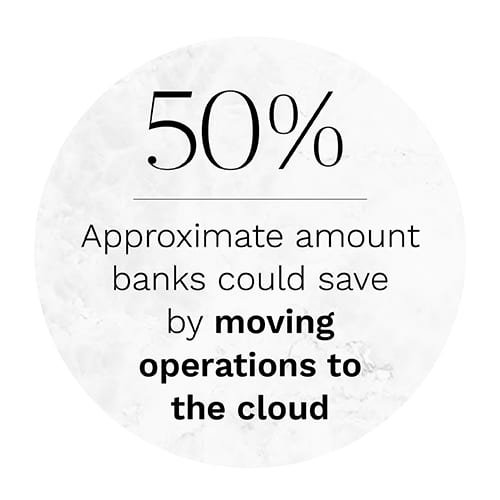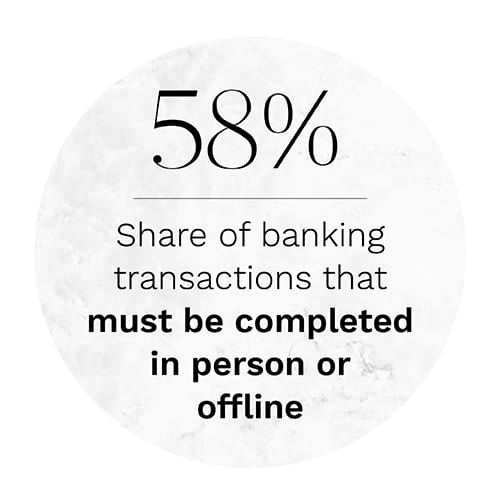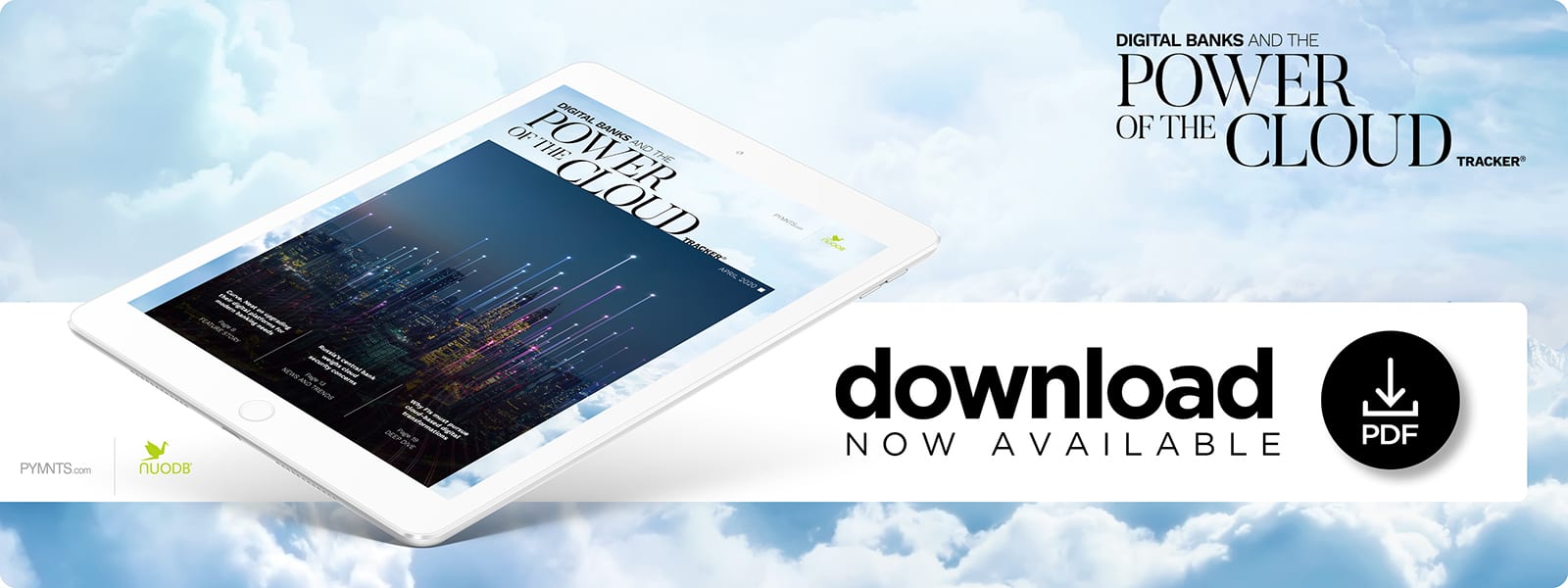The Race To The Cloud: Will Digital Banks Win?

Financial institutions (FIs) are feeling the pressure to offer increasingly personalized, digital-first services to keep customers satisfied.
Crafting the seamlessness customers want means FIs are overhauling their digital infrastructures to enable access to fast, interactive and engaging banking experiences. More banks are therefore moving away from legacy core systems to embrace cloud-native architectures to power automation and meet the speed expected by consumers, securely.
In the inaugural “Digital Banks And The Power Of The Cloud Tracker®,” PYMNTS examines how cloud-based tools are becoming part of banks’ digital transformations worldwide and how they are overcoming obstacles that can come with implementing these technologies.
Developments Around The Cloud Banking World
British FI Lloyds Bank is moving forward on its digital journey wixth the help of a few partners. The bank is working with technology giants Google and Microsoft to create new cloud-based tools that will use their cloud computing software. Lloyds will look to both of these providers to help it create digital banking tools for its customers that will allow it to compete with the rising number of online-only FinTechs and challenger banks grasping at established FIs’ market share in the United Kingdom. The partnerships are part of a larger plan by Lloyds Bank to enhance its online banking offerings, an initiative that began in 2018. The bank has designated $3.7 billion of its funds for this effort.
Google and Microsoft are only two of the many technology providers FIs can work with to move their digital banking schemes forward. IBM is also seeking to gain its own foothold in the cloud banking space, looking to add more capabilities to its own offerings to give it a leg up over its competitors. IBM acquired fellow software company Red Hat for this purpose, and the latter firm will become the company’s hybrid cloud products unit, according to company statements. The acquisition was finalized in July 2019 for $34 billion.
 Making sure customers can access banking services with ease is crucial — but so is keeping those services secure. The cloud allows banks to connect with more third parties or share more data, something that requires new security to keep that information safe from fraudsters. The U.S. Cloud Security Alliance (CSA) has designated cloud security and its importance for national security as the primary topic for its annual summit in 2020, which is currently slated to occur on June 25. The summit will focus on how cloud security should be treated as more FIs begin to use these types of platforms.
Making sure customers can access banking services with ease is crucial — but so is keeping those services secure. The cloud allows banks to connect with more third parties or share more data, something that requires new security to keep that information safe from fraudsters. The U.S. Cloud Security Alliance (CSA) has designated cloud security and its importance for national security as the primary topic for its annual summit in 2020, which is currently slated to occur on June 25. The summit will focus on how cloud security should be treated as more FIs begin to use these types of platforms.
To learn more on these and other stories, visit the Tracker’s Feature Story.
FinTechs Curve, Neat On Why Infrastructure Is Key To Digital Transformations
Providing consumers with the best digital experience is more than just offering them cutting-edge new products and features — more often than not, it means supporting a seamless, personalized experience. Consumers are attracted to digital banking platforms that can anticipate or fulfill their needs almost instantly, which means that banks should be focused less on what innovative technologies they are using and more on what those technologies do to aid in that experience. Crafting digital transformations with this type of strategy at the core can lead to deeper, more satisfying relationships with customers. Nathalie Oestmann, chief operating officer at aggregated payment card provider Curve, and Iris ten Teije, general manager for Europe at FinTech Neat, spoke with PYMNTS about the importance of infrastructure as well as the role of technologies like automation and the cloud.
To learn more about how Curve and Neat are innovating their platforms, visit the Tracker’s Feature Story.
Why Banks Need To Craft Dedicated Solutions For Digital Transformations
 About 2.4 billion consumers currently access digital banking services, a number that is expected to continue to increase over the next four years. Supporting these consumers takes patience, ingenuity and most importantly, the right infrastructure behind the scenes. FIs that are behind on the digital transformation curve thus need to approach innovation holistically, looking for platforms that can help them to easily create and innovate the type of online banking products and services consumers are expecting. This type of flexible infrastructure is key to competing in the digital banking world.
About 2.4 billion consumers currently access digital banking services, a number that is expected to continue to increase over the next four years. Supporting these consumers takes patience, ingenuity and most importantly, the right infrastructure behind the scenes. FIs that are behind on the digital transformation curve thus need to approach innovation holistically, looking for platforms that can help them to easily create and innovate the type of online banking products and services consumers are expecting. This type of flexible infrastructure is key to competing in the digital banking world.
To learn more about the way that cloud technology and data analytics can help develop such platforms, visit the Tracker’s Deep Dive.
About The Tracker
The “Digital Banks And The Power Of The Cloud Tracker®,” powered by NuoDB, examines the latest developments in digital banking, especially how banks are using the cloud and other innovative tools to enhance and personalize finance.
